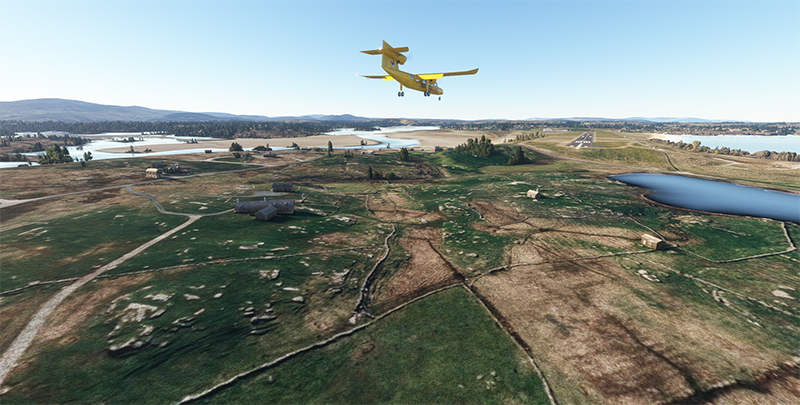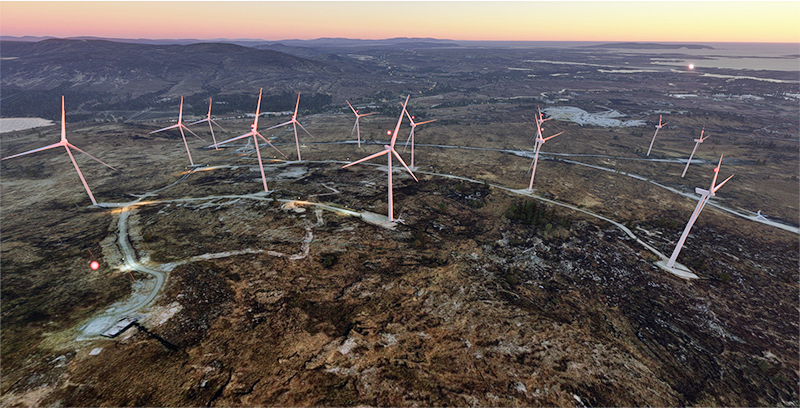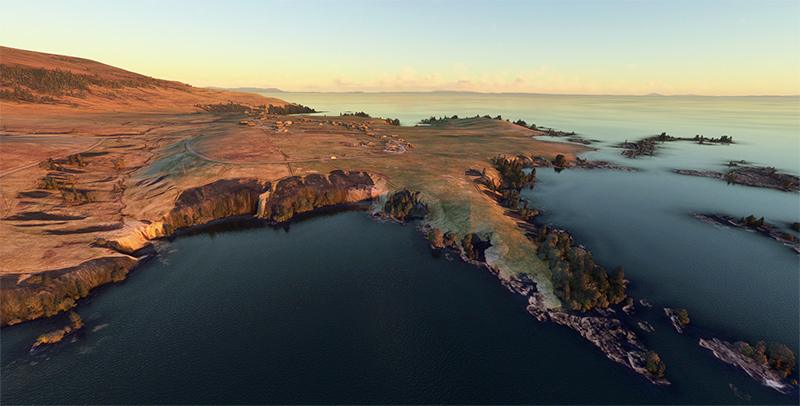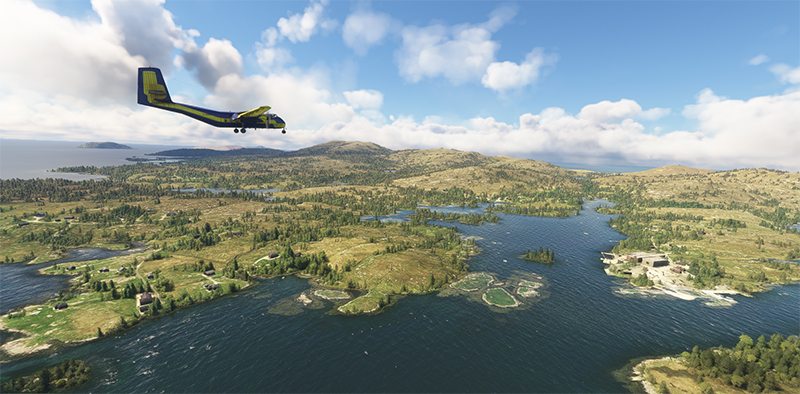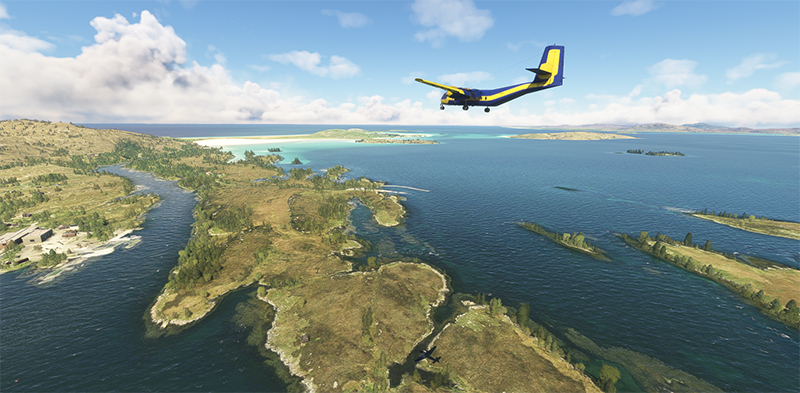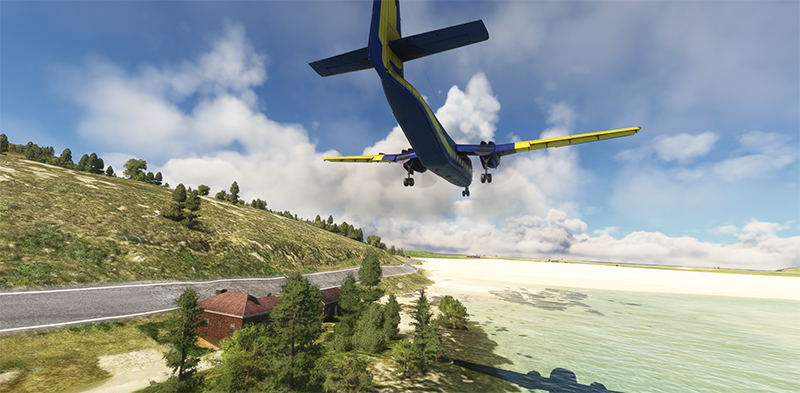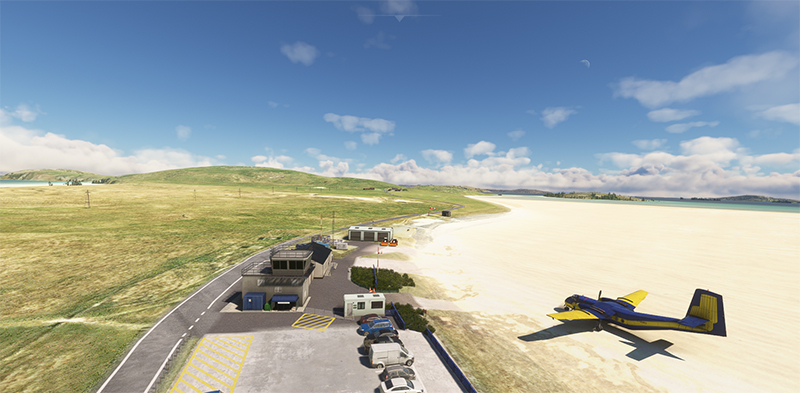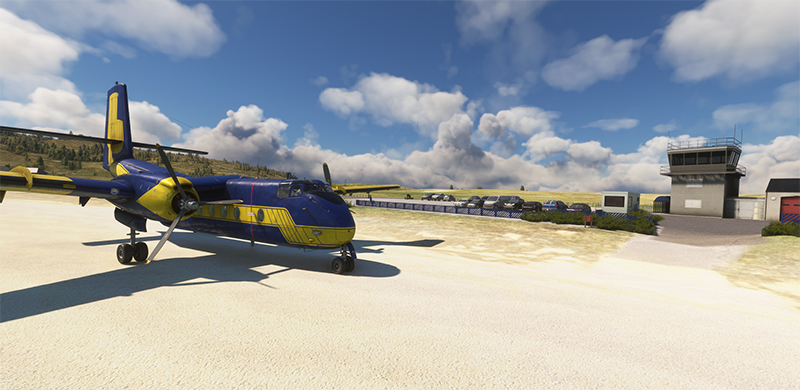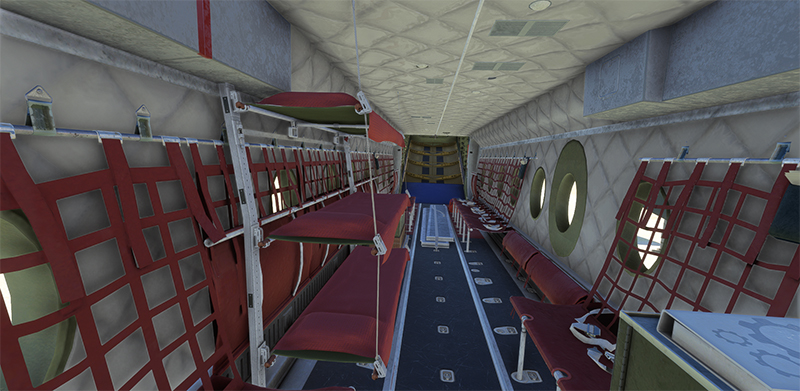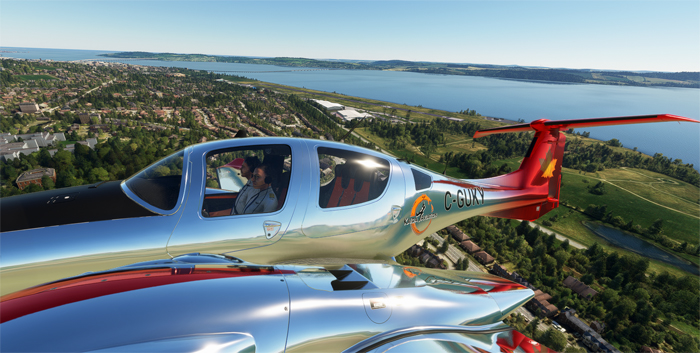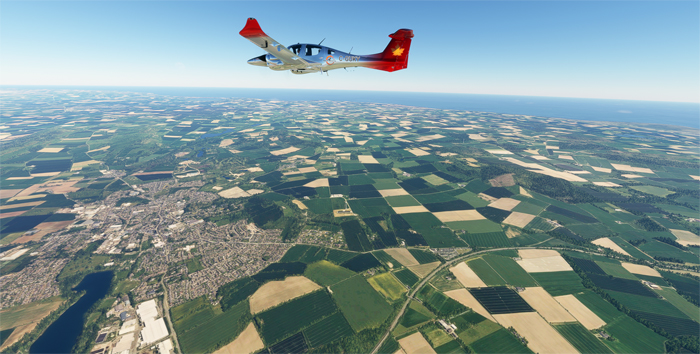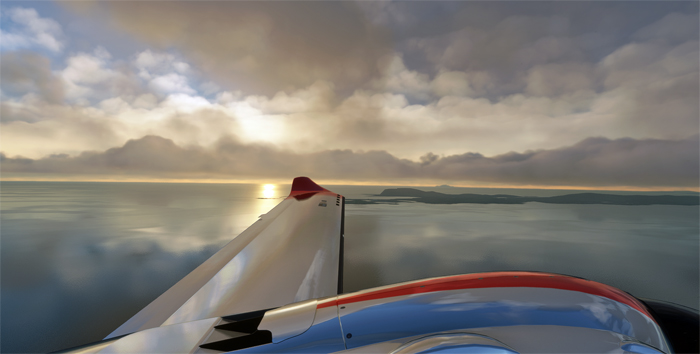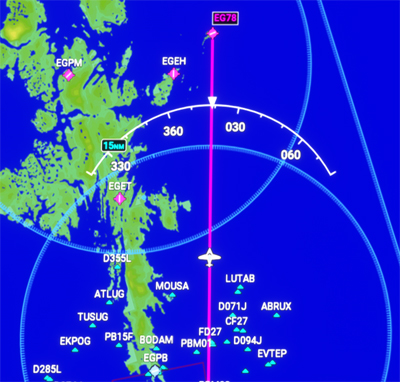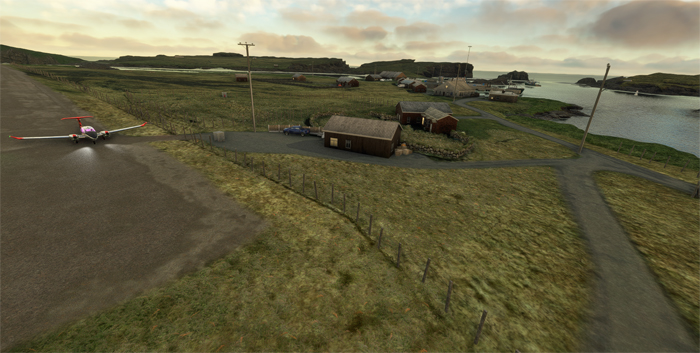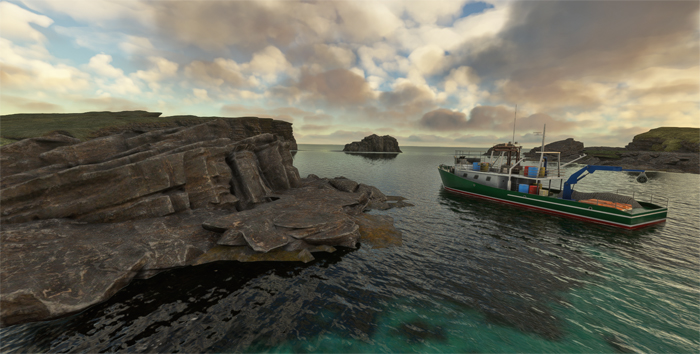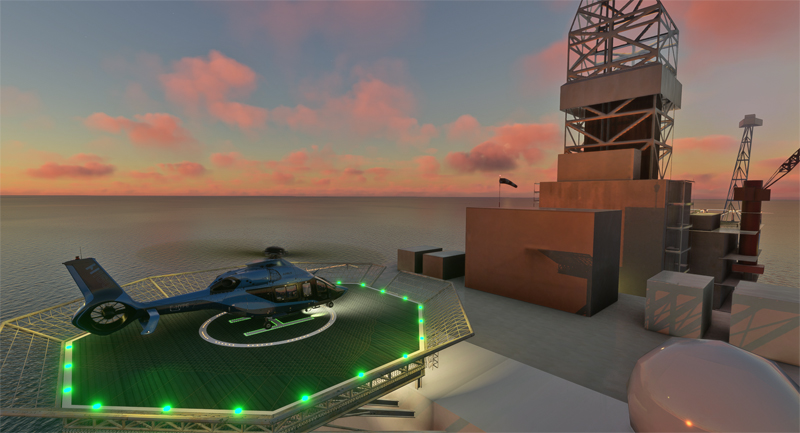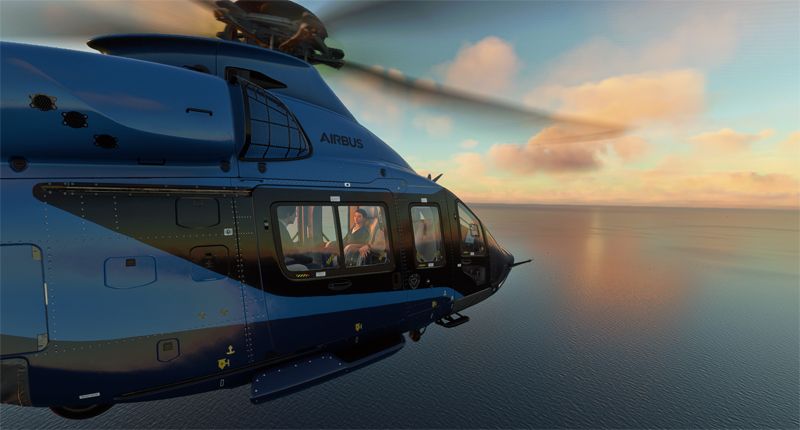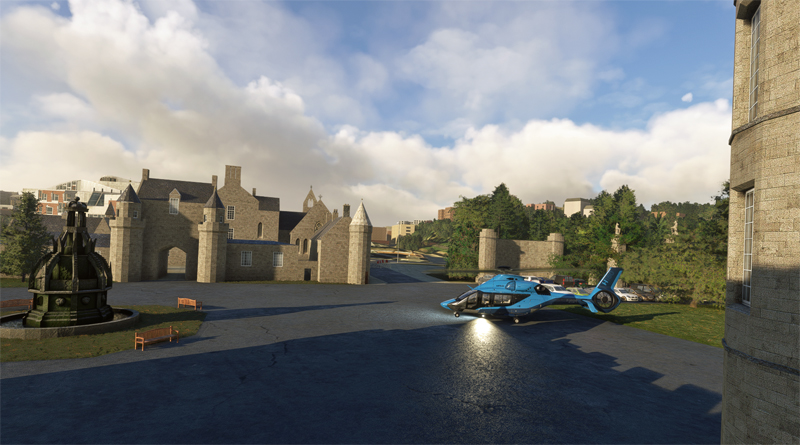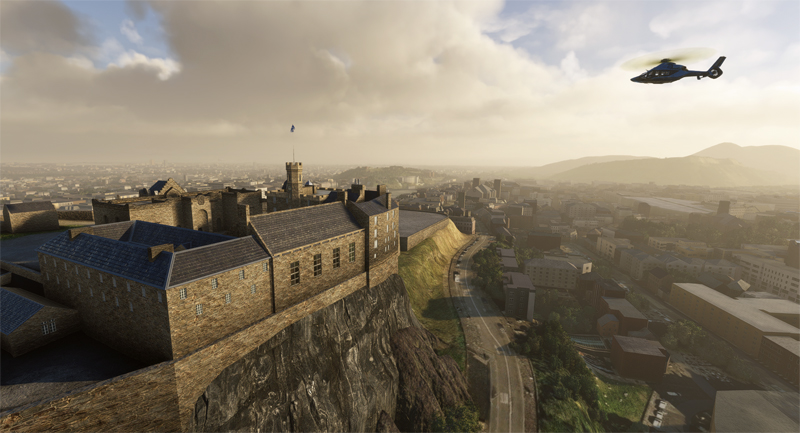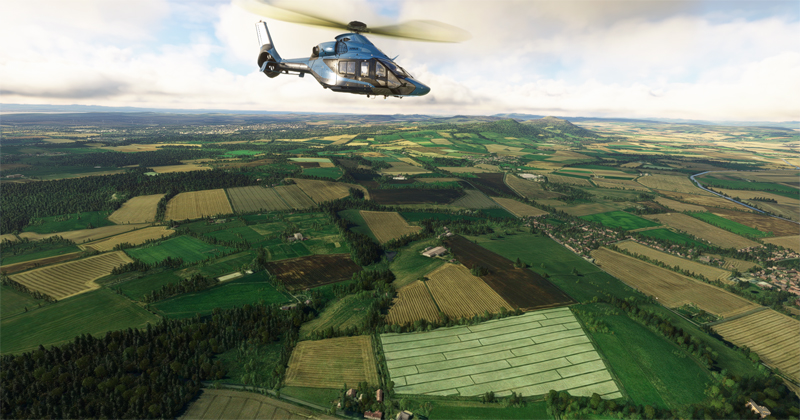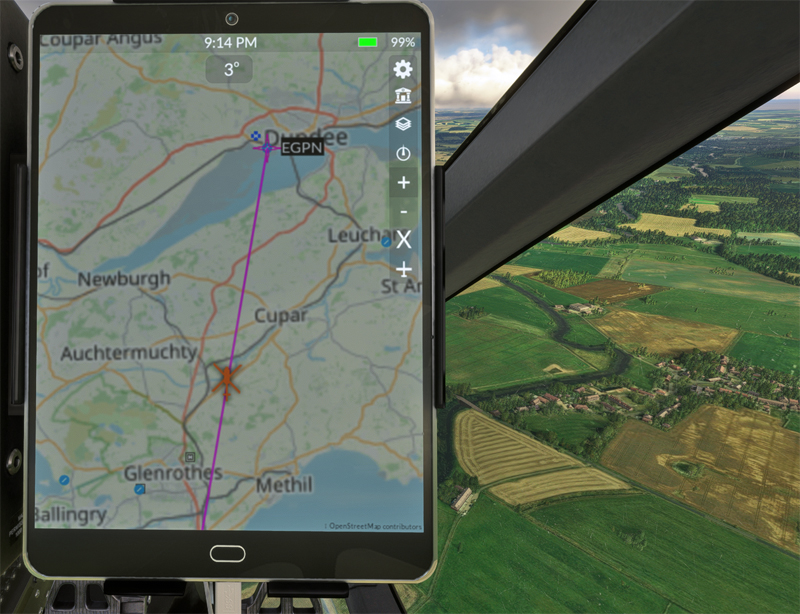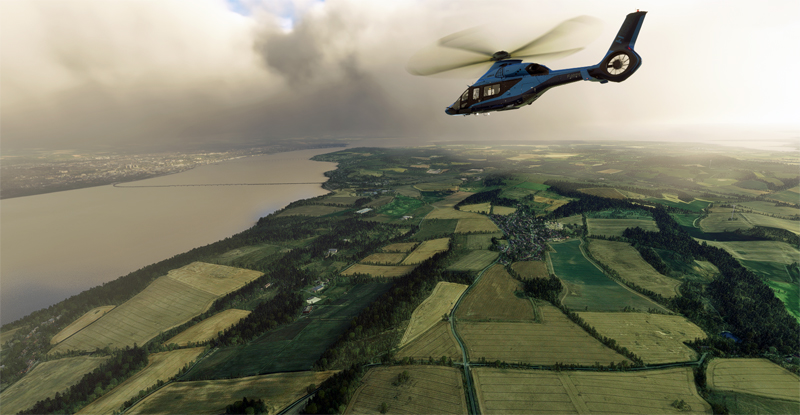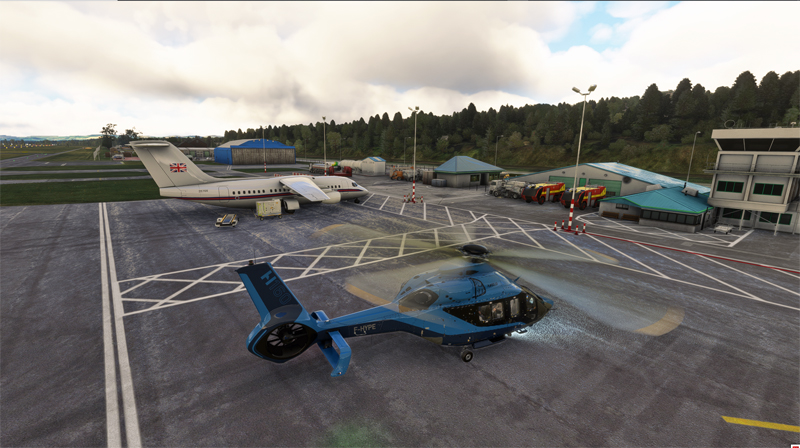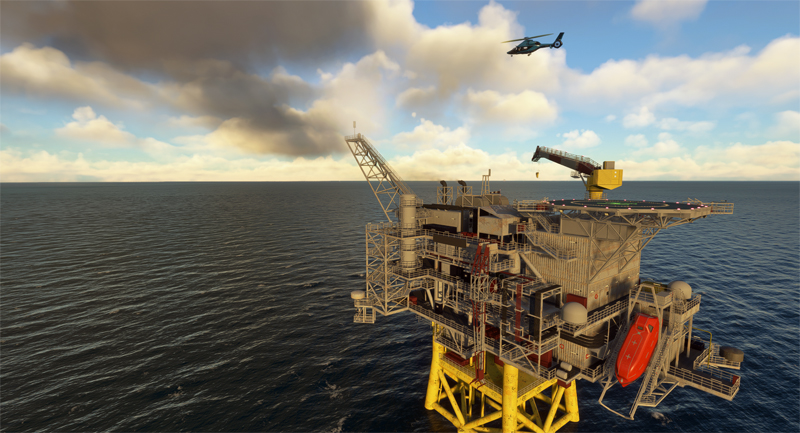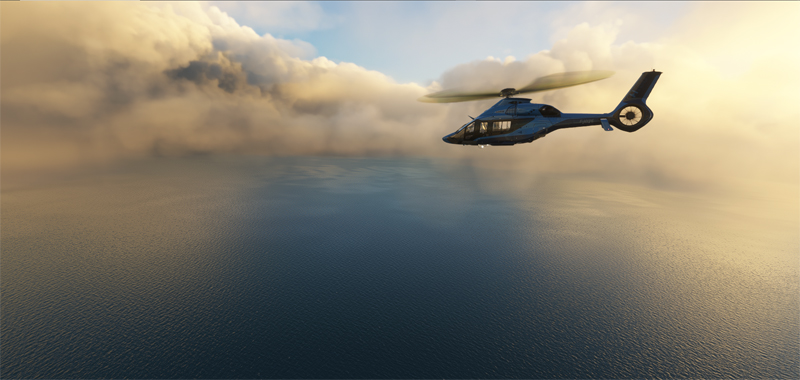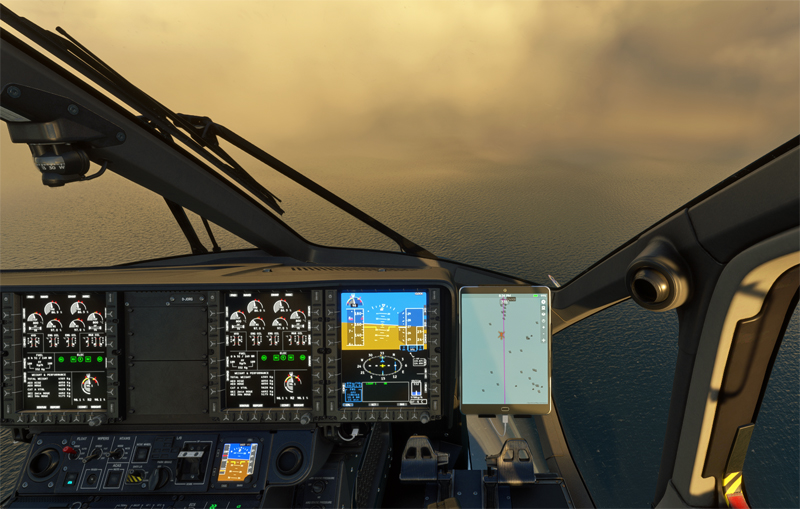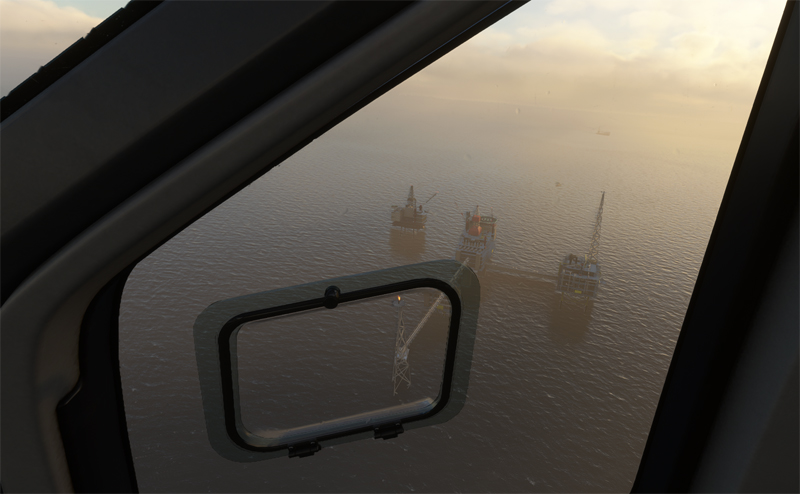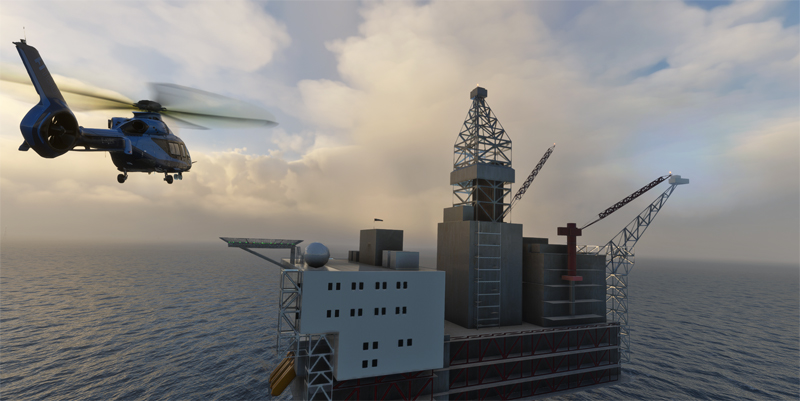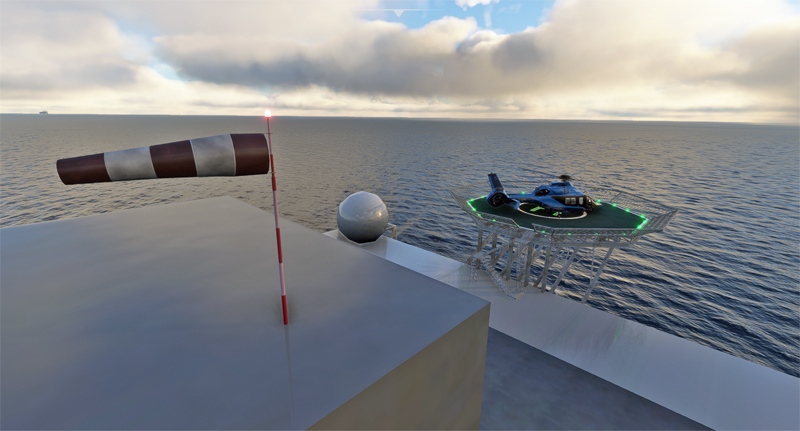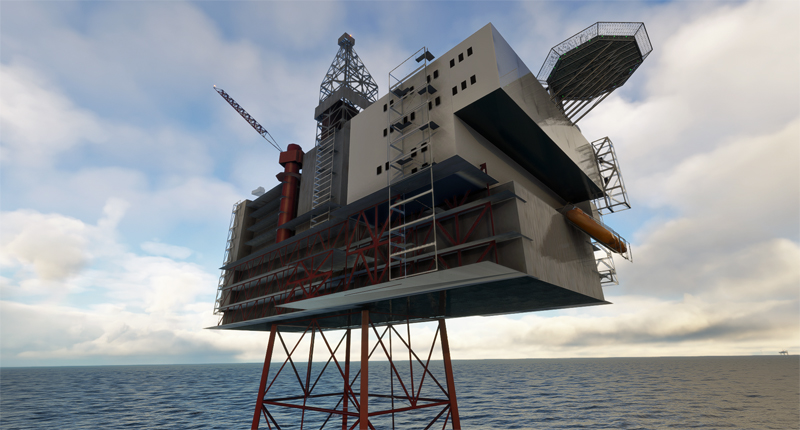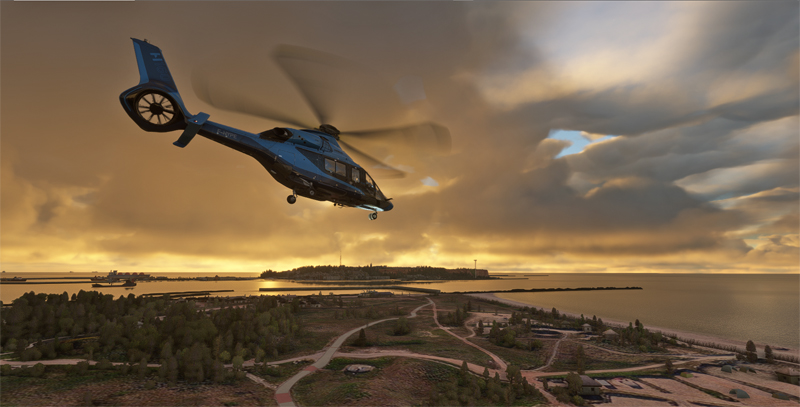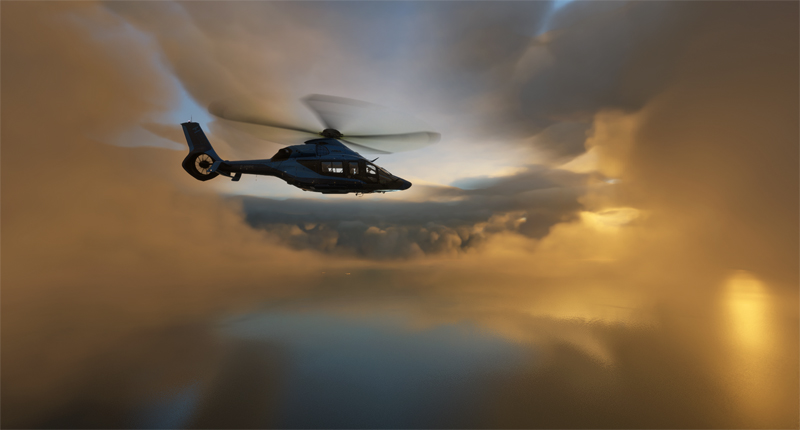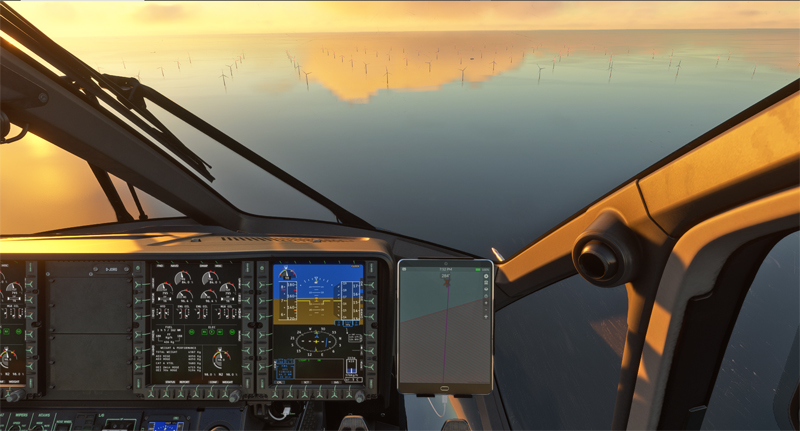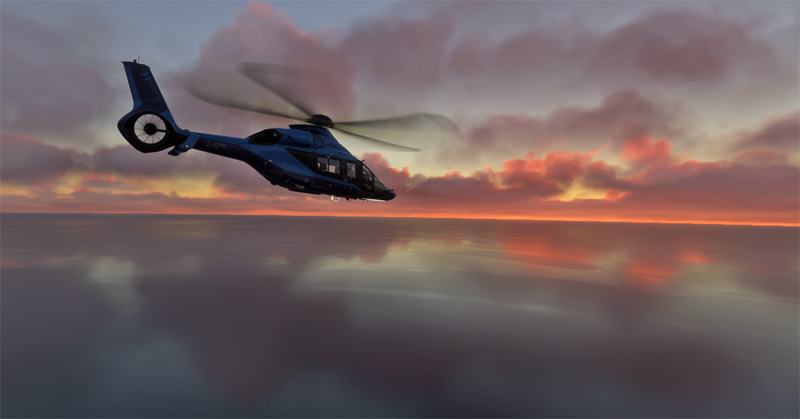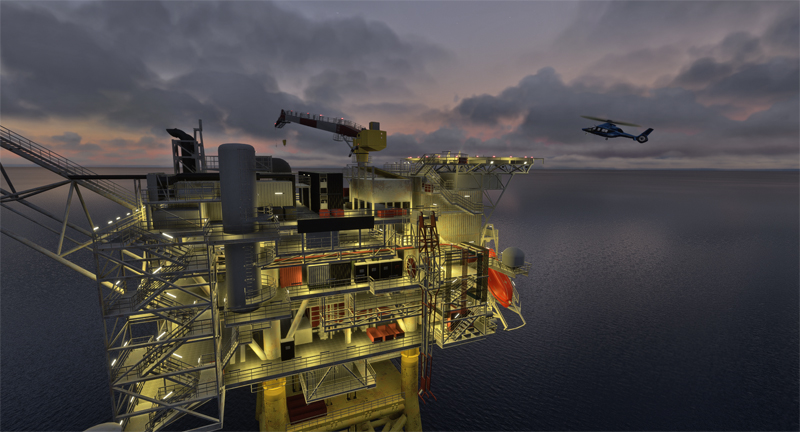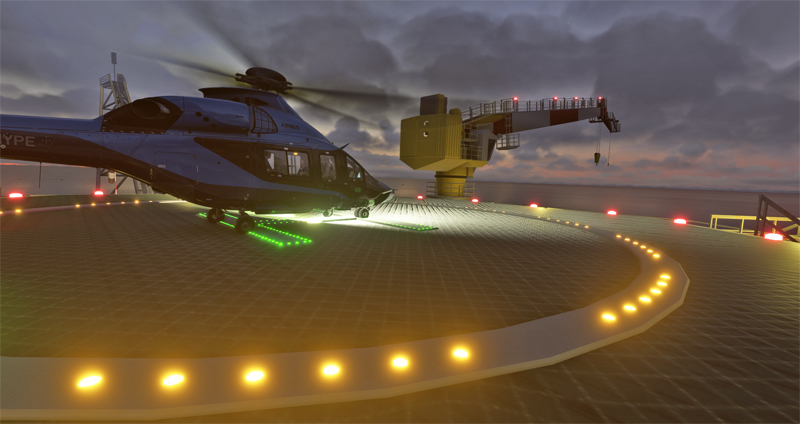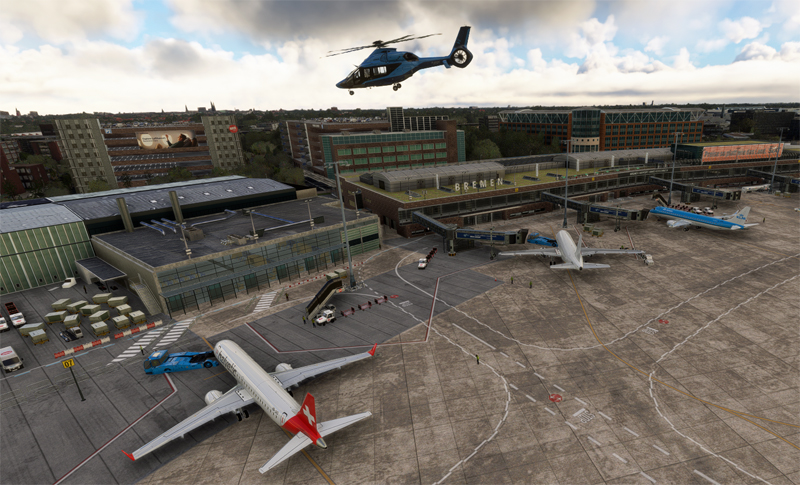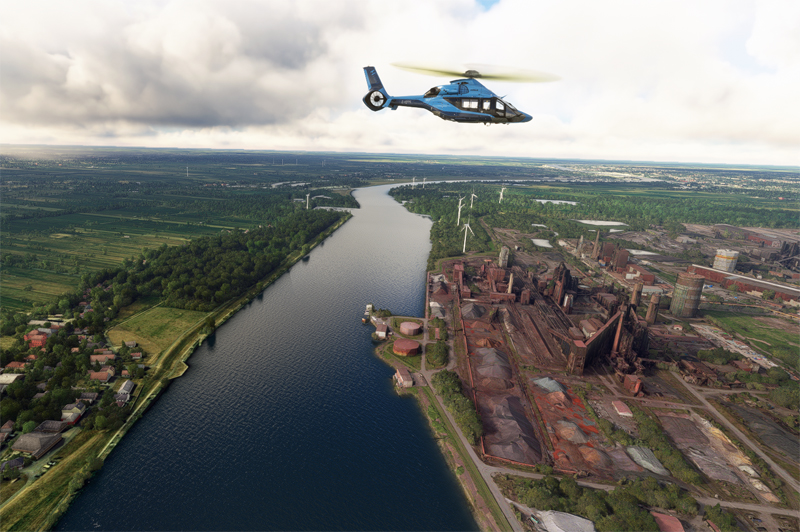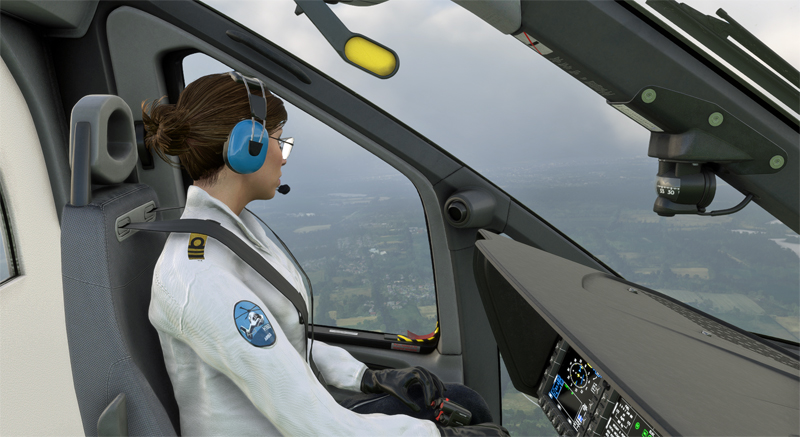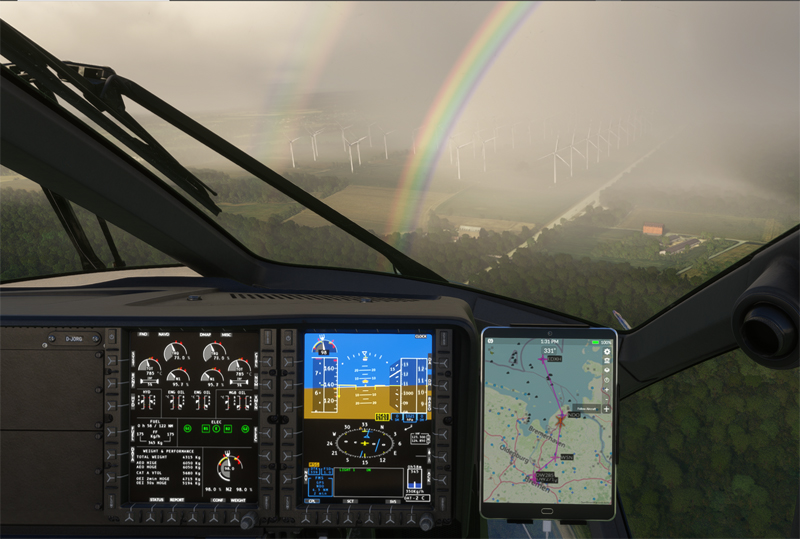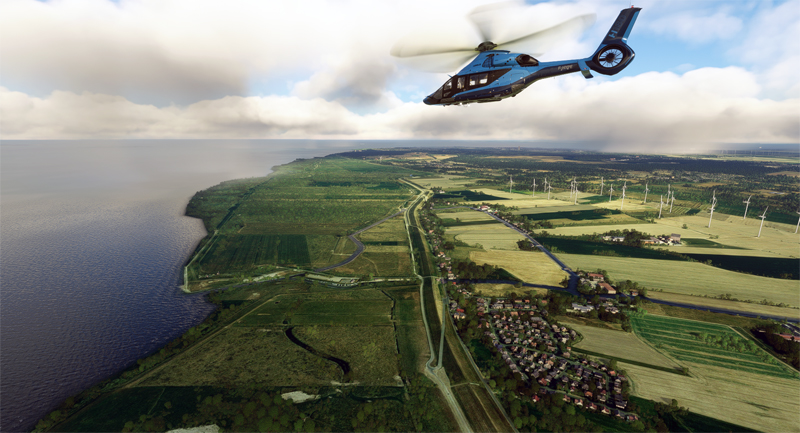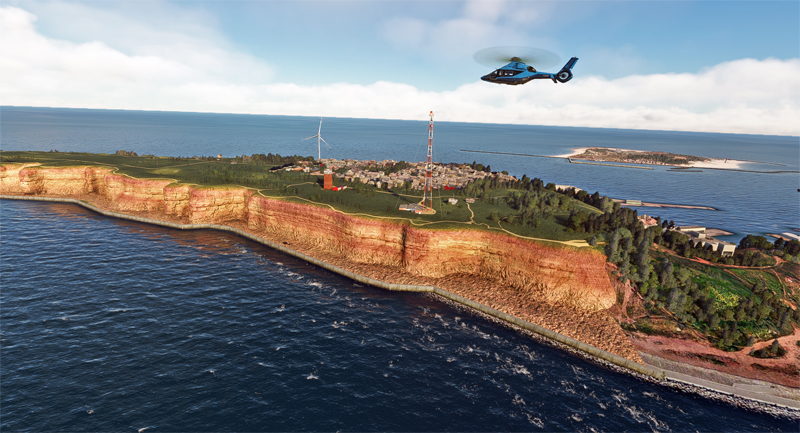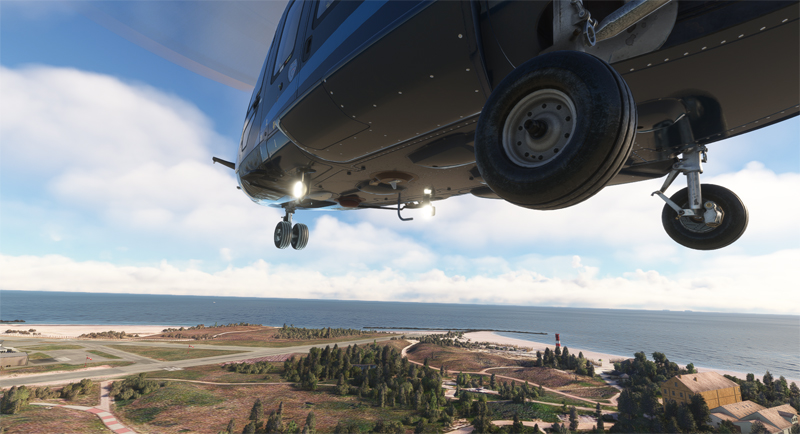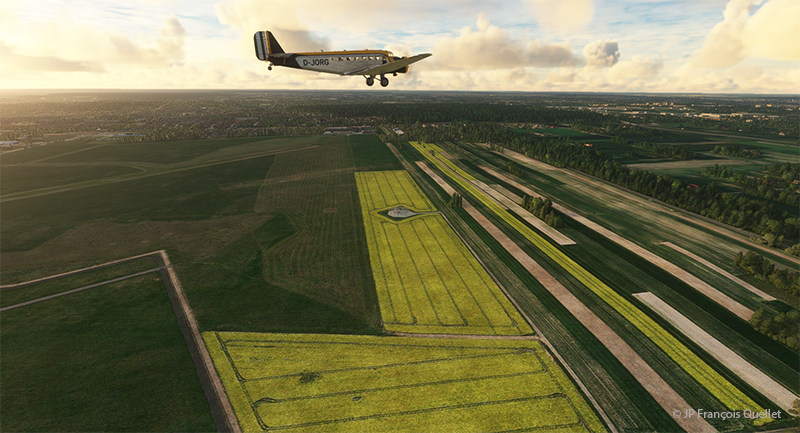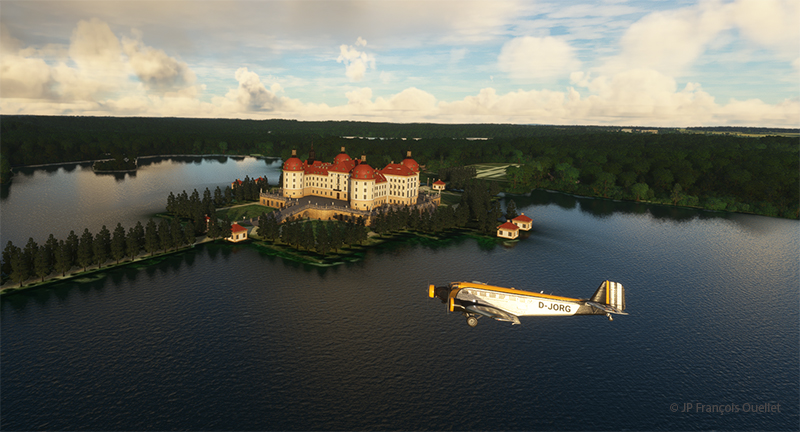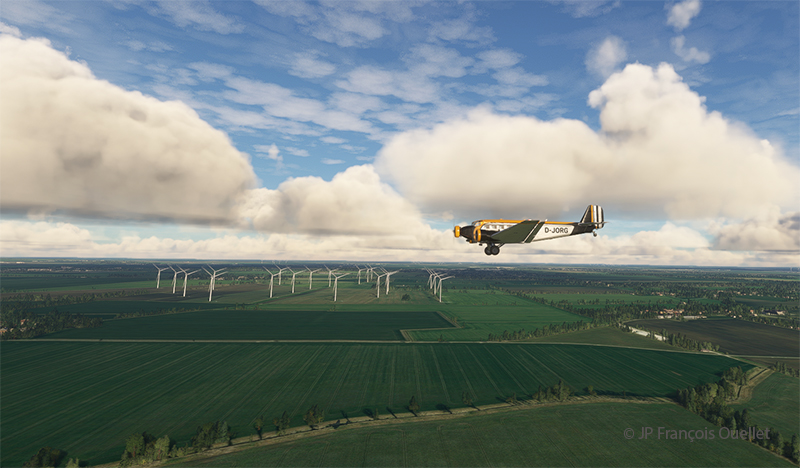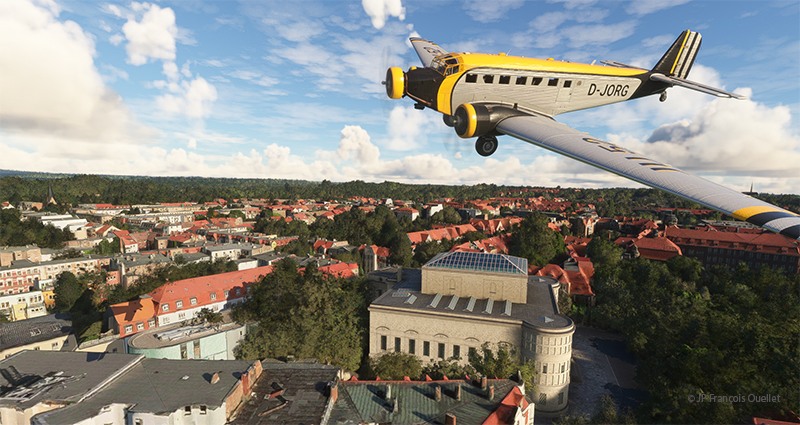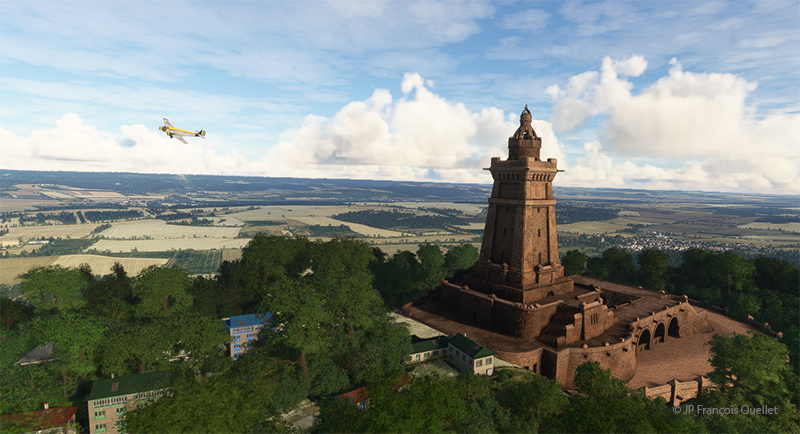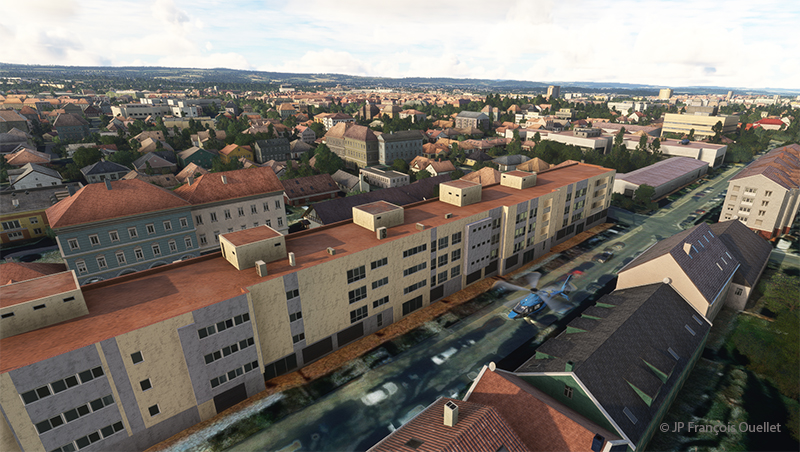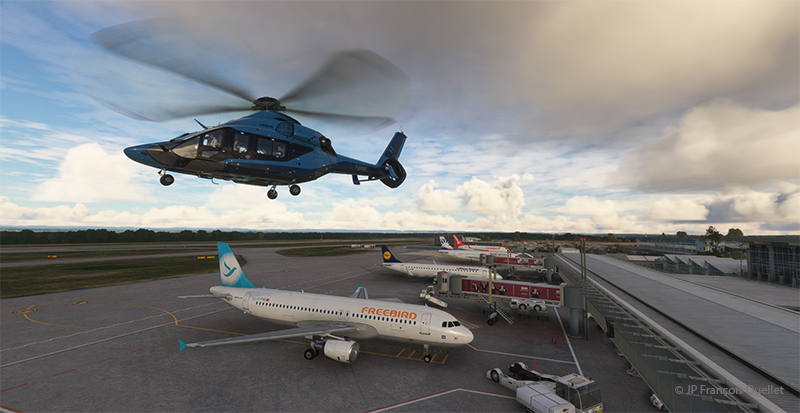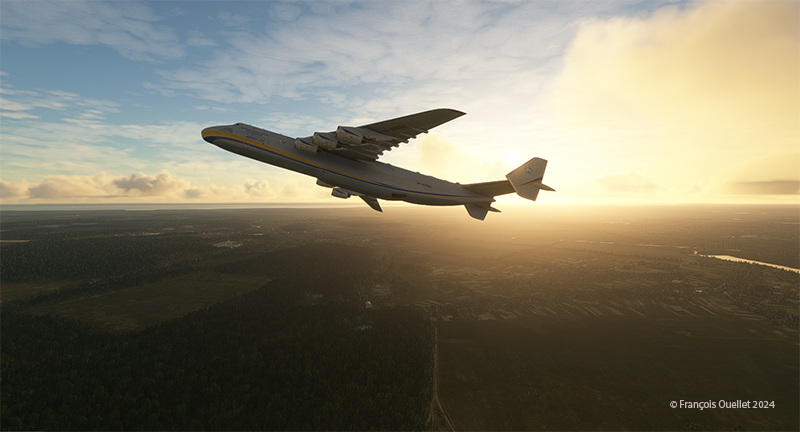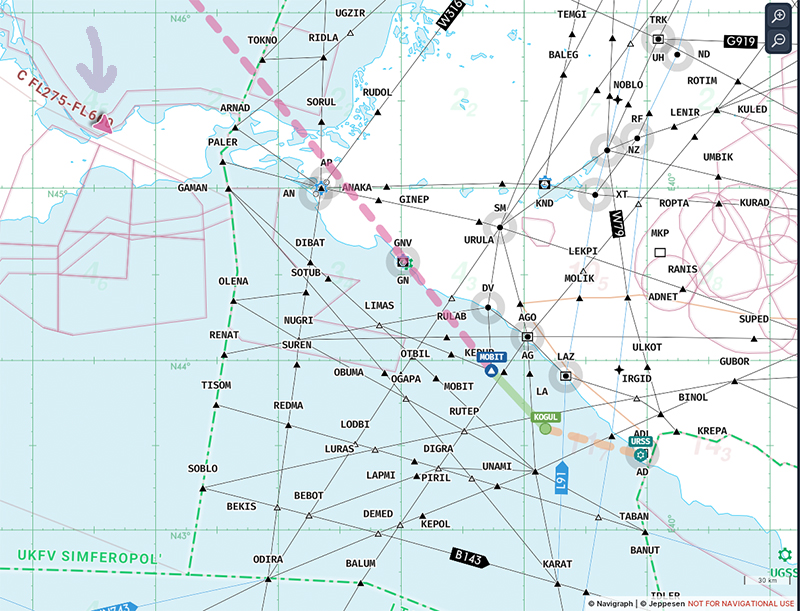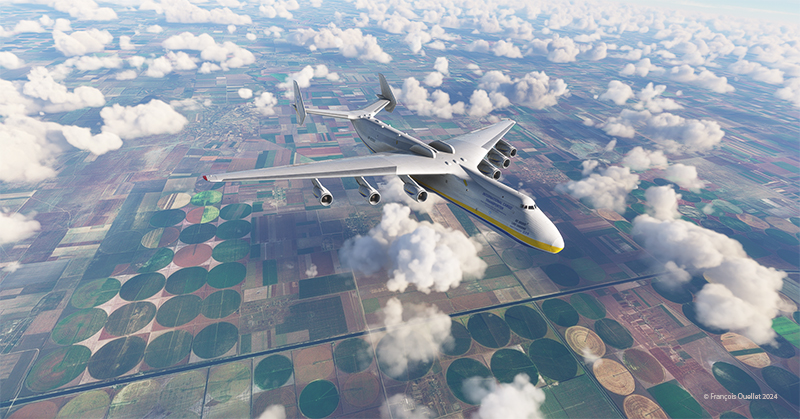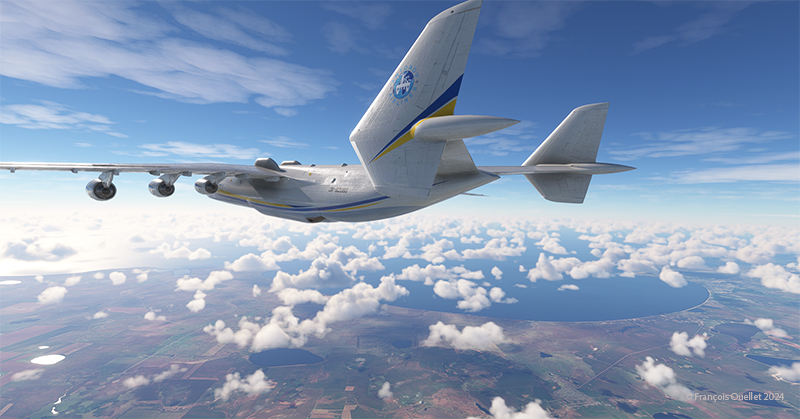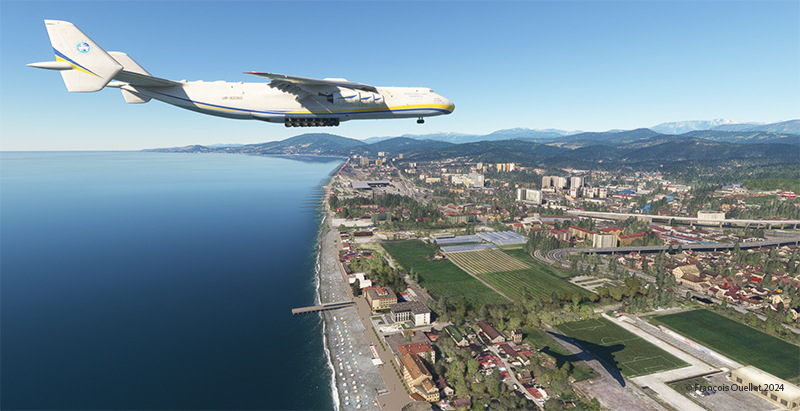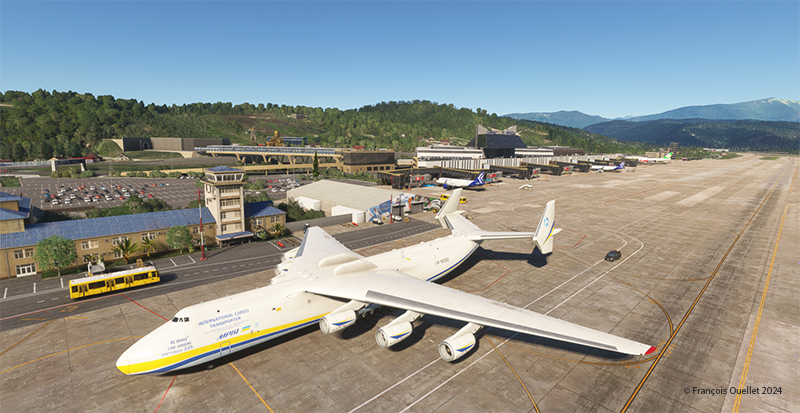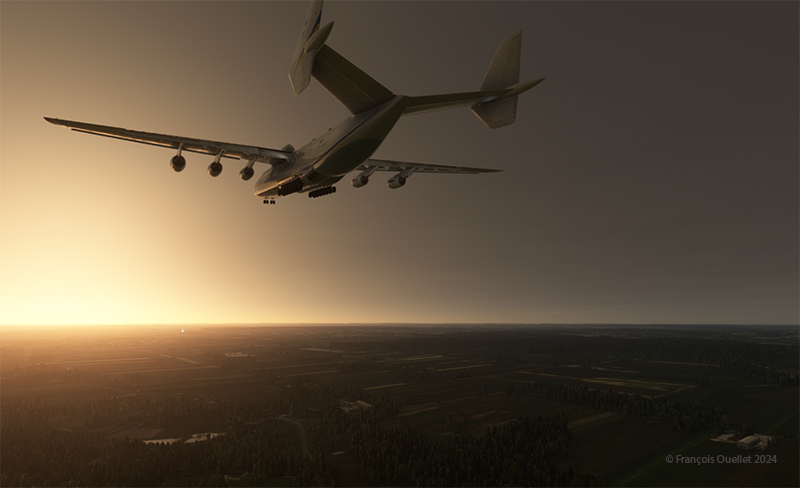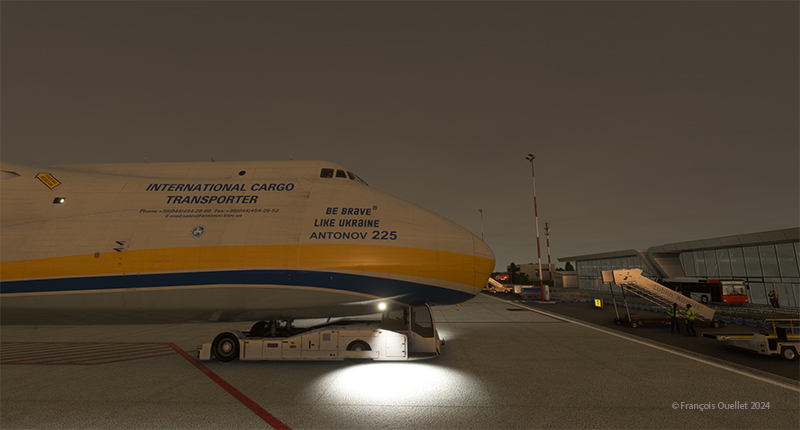Stage 18 of the round-the-world flight simulation takes place between Donegal Airport (EIDL) and Isle of Man Airport (EGNS), also known as Douglas Ronaldsway. This island is renowned as a tax haven and for its online gaming. It has a more “advantageous” financial regime than the UK. Its role also came to light in the “Paradise Papers”.
Since we fly over the Irish Sea in a single-engine aircraft, the Nardi FN-333 is an excellent choice in the event of engine failure. What’s more, it offers an attractive range (490 nmi) and a respectable cruising speed (143 knots at 8,000 feet).
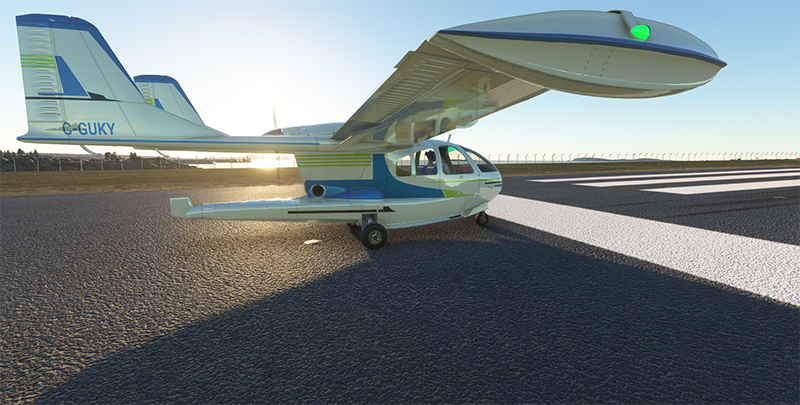
Capable of an ascent of 1280 feet/minute, it flies smoothly over the terrain after taking off from Donegal.
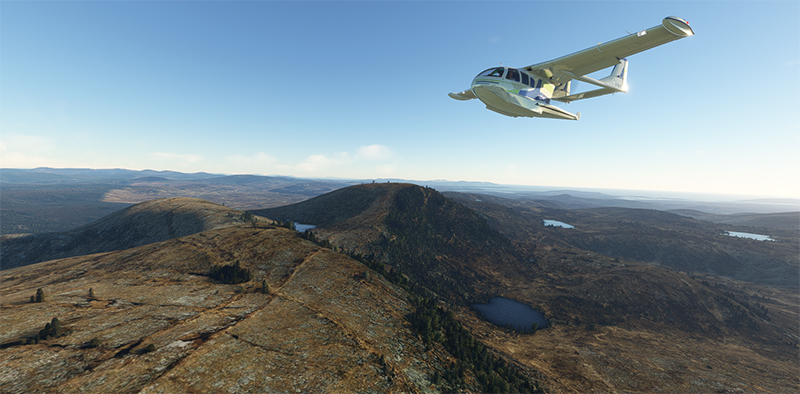
To the left of the flight path is Northern Ireland’s Strangford and Lecale Area of Outstanding Natural Beauty, https://strangfordlough.org/ a tourist attraction rated 4.8/5 by Google users.
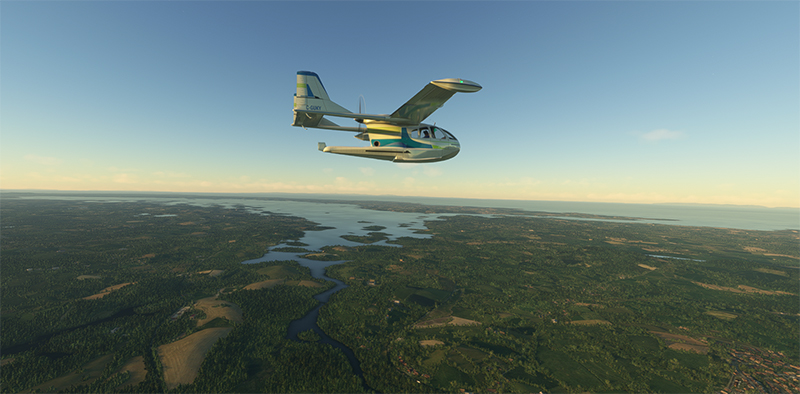
Once over the Irish Sea, you can see the first container ship, which will be followed by many other vessels with a variety of functions (Irish Ferries, car carriers, tankers, LNG carriers, etc.).
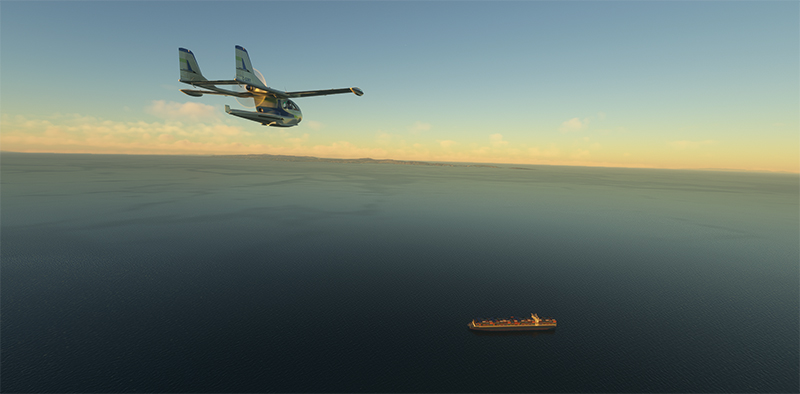
Nardi FN-333 Riviera overflying a container ship in the Irish Sea with Microsoft Flight Simulator
At the end of the day, the Isle of Man becomes visible. It’s always nice to arrive before dark when landing for the first time at an unfamiliar airport. This allows the pilot to get a good look at the surroundings.
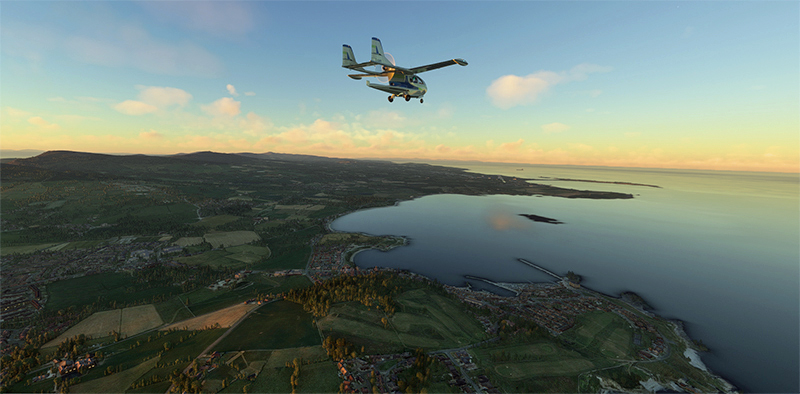
The sun illuminates the cockpit in a very realistic way with the new flight simulators. In the past, shadows didn’t move in the cockpit.
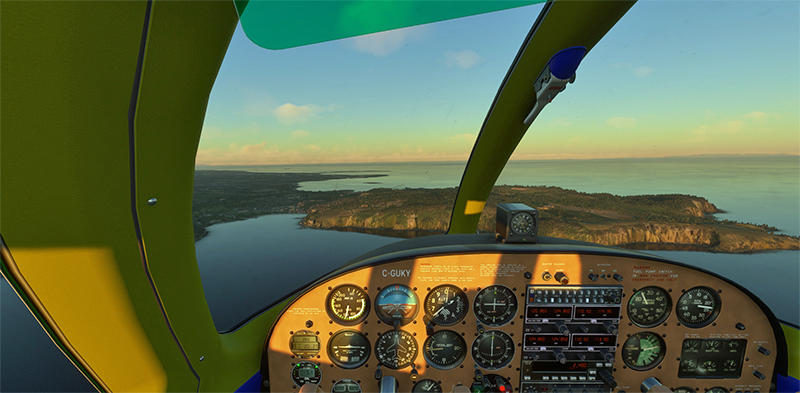
Very close to the Isle of Man Airport (EGNS) is a huge building, King William’s College. It offers private education to young people between the ages of 3 and 18. I wonder if the staff have ever had a scare because of a missed approach by one of the many aircraft that land on the island every day. After all, there is no shortage of accidents.

Fortunately, the landing did not frighten the students at the nearby college.
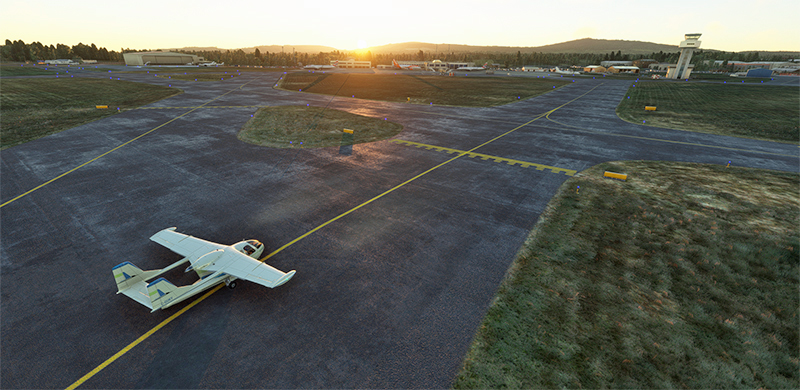
A few days’ stopover will be necessary before embarking on the rest of the trip. We’ll then reach the Republic of Ireland, landing at Dublin airport (EIDW) with the MSFS 2020 flight simulator and the Cessna 310R from Blackbird Simulations.
Click on the link to read more about the exploration of the planet in flight simulation on my blog.



